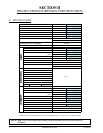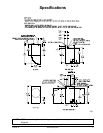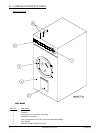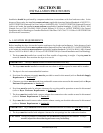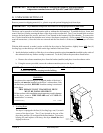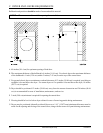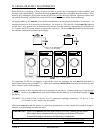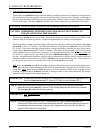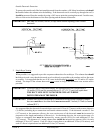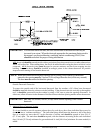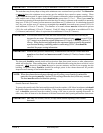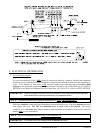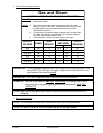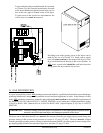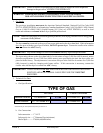
12 American Dryer Corp. 113344-9
E. EXHAUST REQUIREMENTS
1. General Exhaust Ductwork Information
Exhaust ductwork should be designed and installed by a qualified professional. Improperly sized ductwork
will create excessive back pressure which results in slow drying, increased use of energy, overheating of
the dryer, and shut down of the burner by the airflow (sail) switches, burner hi-limits, or basket (tumbler)
hi-heat thermostats. The dryer must be installed with a proper exhaust duct connection to the outside.
CAUTION: This dryer produces combustible lint and must be exhausted to the outdoors.
CAUTION: IMPROPERLY SIZED OR INSTALLED EXHAUST DUCTWORK CAN
CREATE A POTENTIAL FIRE HAZARD.
The ductwork should be laid out in such a way that the ductwork travels as directly as possible to the
outdoors with as few turns as possible. Single or independent dryer venting is recommended.
When single dryer venting is used, the length of ductwork from the dryer to the outside exhaust outlet must
not exceed 15 feet (4.57 meters). The minimum diameter of this ductwork must be at least 14-inches
(35.56 cm). In the case of multiple (common) dryer venting, the distance from the last dryer to the outside
exhaust outlet must not exceed 15 feet (4.57 meters). The shape of the ductwork
is not critical as long
as the minimum cross-sectional area is provided. It is suggested that the use of 90° turns
be avoided; use
30° and/or 45° angles instead. The radius of the elbows should preferably be 1-1/2 times the diameter of
the duct. Including basket (tumbler) and dryer elbow connections or elbows used for outside protection
from the weather, no more than two (2) elbows should be used in the exhaust duct run. If more than two
(2) elbows are used, the cross-sectional area of the ductwork must be increased.
ALL ductwork should be smooth inside with no projections from sheet metal screws or other obstructions,
which will collect lint. When adding ducts, the duct to be added should overlap the duct to which it is to be
connected. ALL ductwork joints must be taped to prevent moisture and lint from escaping into the
building. Inspection doors should be installed at strategic points in the exhaust ductwork for periodic
inspection and cleaning of lint from the ductwork.
IMPORTANT: Exhaust back pressure measured by a manometer in the exhaust duct must be no less
than 0 and must not exceed 0.3 inches (0.74 mb) of water column (W.C.).
NOTE: When the exhaust ductwork passes through a wall, ceiling, or roof made of combustible
materials, the opening must be 2-inches (5.08 cm) larger than the duct (all the way around).
The duct must be centered within this opening.
IMPORTANT: It is recommended that exhaust or booster fans not be used in the exhaust ductwork
system.
NOTE: As per the National Fuel Gas Code, “Exhaust ducts for Type 2 clothes dryers shall be
constructed of sheet metal or other noncombustible material. Such ducts shall be equivalent in
strength and corrosion resistance to ducts made of galvanized sheet steel not less than 26
gauge (0.0195-inches [0.5 mm]) thick.”



